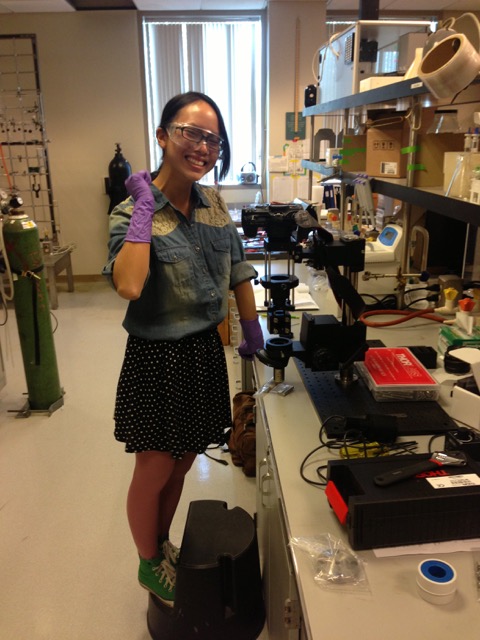Scripps College alumna Victoria Nguyen ’15 is first author on a scientific paper, “The Design of a Cost Effective, Multifunctional Fluorescence Microscope,” recently published about a new type of research microscope labs can assemble themselves, saving thousands of dollars. According to Assistant Professor of Chemistry Babak Sanii, who oversaw Nguyen’s undergraduate research in his lab at the W.M. Keck Science Center, this new type of microscope is unique in that it swings around the sample, uses fluorescence for imaging, and is very low cost. This particular device is designed for ellipsometry, an optical method that assists in the characterization of ultrathin silicon layers, says Sanii. The Swingscope, as it has been named, is available as an “open design” product, making it readily accessible to labs whose space and financial resources may be limited.

“The paper is Victoria’s design for a new type of microscope that is very important to biology and materials science,” Sanii says. “It’s a do-it-yourself assembly, in that the components for the microscope can be obtained off-the-shelf, or 3D printed. Other labs can buy the parts, and 3D print the parts—our lab provides files—and build their own at a much lower cost than typical fluorescence microscopes.” Sanii explains that fluorescence microscopes typically cost about $50k, and a scientist would need to buy at least two devices to obtain images above and below a sample. The new microscope design costs about $16k, can be built in a day, and because it incorporates the “swing” design, is the only microscope needed to provide the desired imaging. The research team created a detailed manual to provide instructions for building the microscope.
The Swingscope primarily helps researchers in the semiconductor industry determine how thick their silicon layers are, Sanii noted. Nguyen began work on the microscope project following her first year at Scripps College, and gave a talk on the microscope at the American Chemical Society meeting in San Diego her senior year. She has also presented the design at the Biophysical Society Meeting. “She learned about microscopy from the ground up, and used that knowledge to design, build, and demonstrate the Swingscope—it’s a real success story in terms of undergraduate research,” Sanii says. Nguyen also collaborated with a fellow research student at Claremont McKenna College, John Rizzo, whose thesis was adding the ellipsometry to the microscope, with Sanii listed as third author.

